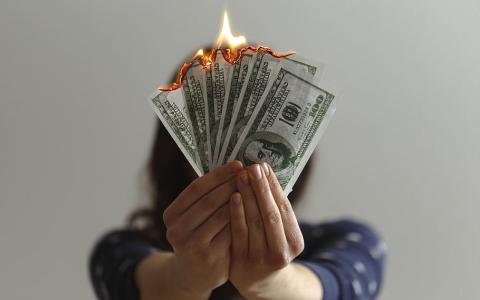
If you blinked yesterday, you missed House Speaker Kevin McCarthy's speech casting the brinksmanship around the federal budget as an existential battle for discipline. . . . unless you were watching the bond market, where enough people sold Treasury debt to push long-term yields back to where they were right after the SVB crash.
Big money evidently doesn't consider this constructive in the short run. Even if current deficits are ultimately unsustainable, Wall Street would rather kick that can even farther down the road than contemplate tough medicine. The mood is still a little too fragile for that.
Instead, what Wall Street wants is relief from any sources of potential tension, including hinting that Congress might force a government shutdown or even a partial Treasury default in order to prove a point. It feels a lot like a flashback to the summer of 2011 out there.
That won't be fun. But unless the rating agencies decide to make a rhetorical point of their own they way they did a decade ago, it's hard to see any of the grandstanding mattering.
And the agencies aren't concerned. Moody's maintains a "stable" outlook on U.S. credit and so does Standard & Poor's, which triggered the 2011 market shudder by cutting Treasury to a lowly AA+ . . . below Johnson & Johnson and Microsoft and par with Apple.
This time around, there's zero muttering about a rating cut even if the government shuts down again or Treasury skips a few bills. As far as the agencies are concerned, the U.S. government remains one of the best prospects in an increasingly unsettled credit environment.
They're grading on a curve. And as long as global investors still respect their pronouncements, Treasury is no worse on that relative basis than it was a year ago.
The question, of course, is how long the agencies will remain credible if Congress and the White House fail to reach a deal before the government runs out of money. It's not about the numbers, though.
Flash back to 2011 and the hangover from the credit crash had pushed the deficit to almost $1.5 trillion . . . about 11% of GDP . . . bringing cumulative Treasury debt to 80% of the size of the underlying economy. It was bad.
Now, however, the economy has nearly doubled and the deficit is currently tracking at around $1.4 trillion, which relieves a lot of the immediate pressure on the numbers. We know we can sustain these ratios. The rating agencies aren't concerned about that part.
And they know politicians will bicker and grandstand. That was what shocked S&P in 2011. It doesn't shock anyone now.
A downgrade is vanishingly unlikely, even if a shutdown happens. Hang in there.



